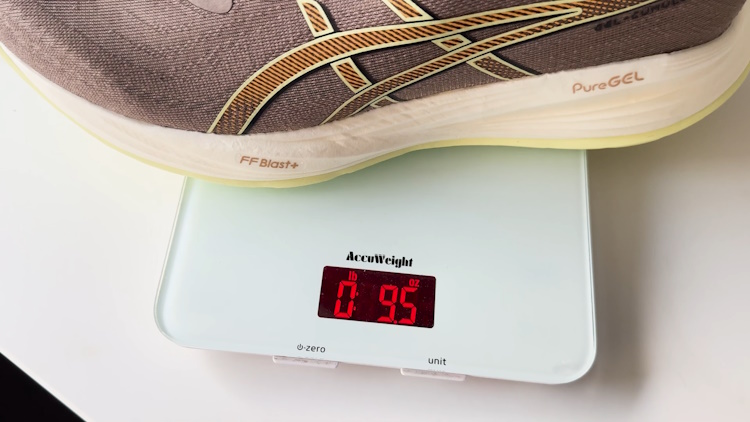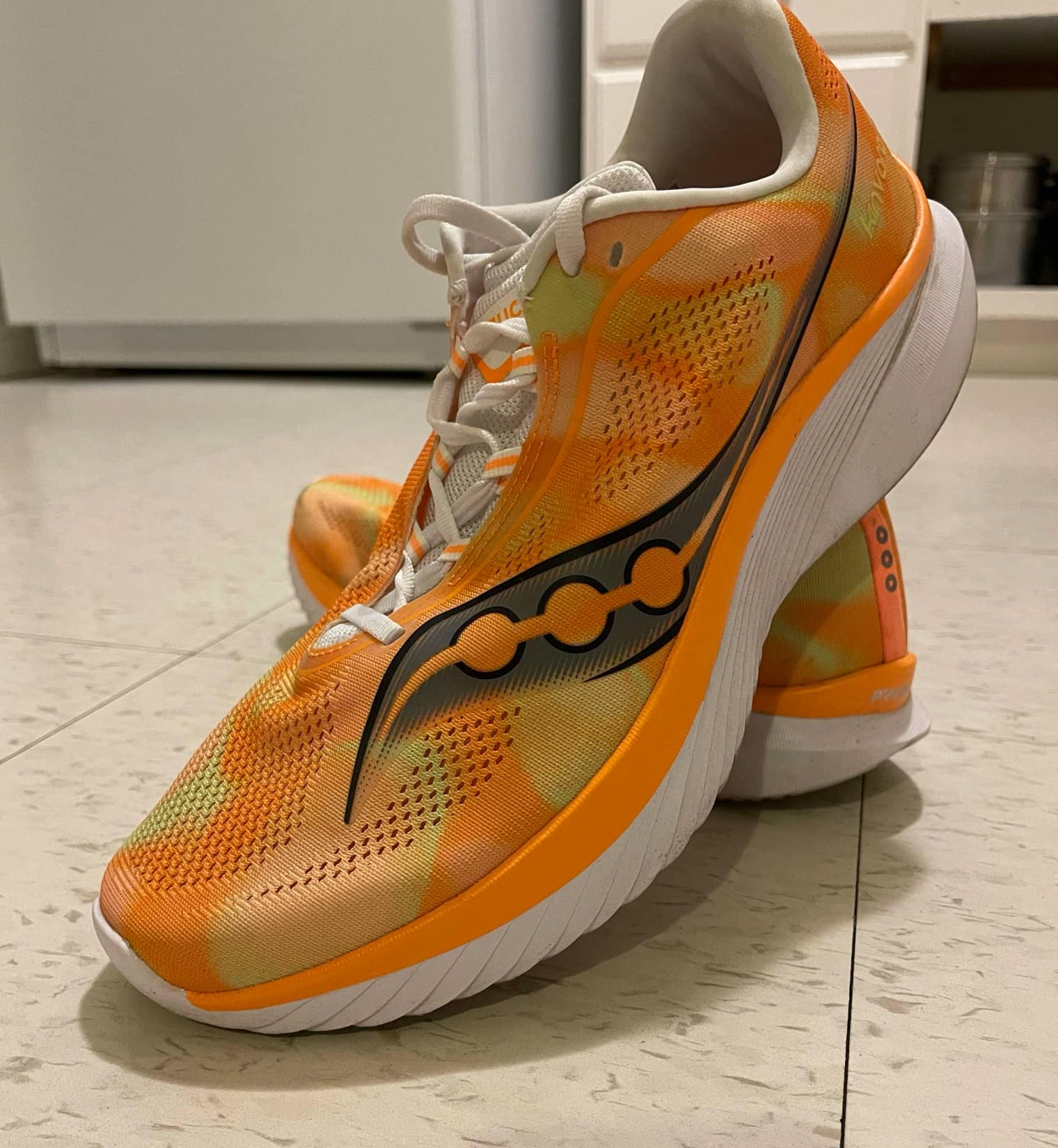Running shoe science has evolved over the years, from hard leather running shoes that broke your feet in, to rubber and foam, to the high-tech, often carbon fibre-infused lace-up training shoes we have now.
Runners have also always been obsessed with the weight of their shoes and how much time they can cut from their race times but making the shoe lighter or performing better. Let's talk about the weight issue!
If you click, or buy from, links on this page, we may receive compensation. Learn more

The Impact of Shoe Weight on Performance
I have been a runner since the age of 12, and that was quite a few years ago. I did not see the invention of the running shoe, but I was present for the 1980s running boom and have witnessed a lot of changes.
Renowned running coach and Nike co-founder Bill Bowerman emphasized the impact of shoe weight on performance, estimating that "removing one ounce (28 g) from a shoe... would translate in a reduction of 55 pounds (25 kg) of lift over a one mile (1.6 km) span." The shoes runners, especially the elites, raced in, got thinner and lighter and lighter, and recreational runners looking to also do well, snapped up models that were available to them too.

Another study conducted at the University of Colorado Boulder found that adding 100 grams (3.5 ounces) to running shoes increased the aerobic demand of running by 1%, leading to slower race times.
Would you believe that a non-racing shoe is one of the lightest in 2025? Check out the Saucony Kinvara, one of my favourite shoes.
Lightweight Running Shoe Stats
Model | WeigHT | Best For | Check at |
|---|---|---|---|
Nike Streakfly 2 | 133 g | 5K–10K racer | |
Nike Streakfly 2 | 145g | 5K–10K racer | |
Nike | 148g 5.2oz | Road racer (carbon) | |
On Cloudboom Strike LS | 170g | Road racer (carbon) | |
ASICS Metaspeed Sky Paris | 185 g | Carbon marathon racer | |
ASICS Metaspeed Edge Paris | 185 g | Carbon marathon racer | |
Puma Deviate Nitro Elite 3 | 194 g | Carbon distance racer | |
Saucony Endorphin Elite 2 | 199 g | Carbon super shoe | |
Saucony Kinvara 15 | 200 g | Lightweight daily trainer | |
Nike Vaporfly 3 | 200 g | Carbon marathon racer | |
Adidas Adizero | 200 g | Carbon distance racer | |
Saucony Endorphin Elite | 204 g | Carbon super shoe | |
Brooks Hyperion | 204.1 g 7.2 oz | Carbon road racer | |
Altra Vanish Carbon | 206 g 7.3 oz | Zero-drop carbon racer | |
Diadora Equipe | 210 g 7.4 oz | Pebax-plated racer |
*Weights reflect the men’s reference size stated by each brand (most often US 9 or 10; where UK size given, US equivalent noted).
These twenty models are the lightest‑in‑catalogue footwear from major performance brands, ranging from hyper‑minimal 5K racers to feather‑weight daily trainers, available from ecommerce sites and their own brand sites.
What the Science Says
iis of how the weight of a running shoe affects a runner's efficiency and performance, with insights from recent studies and expert opinions. When exploring how the weight of running shoes influences running efficiency and performance, several studies and expert analyses provide valuable insights.

Influence of Shoe Mass on Performance and Running Economy in Trained Runners
How Does the Weight of Running Shoes Affect Speed and Performance?
Biomechanical Analysis of Running Foot Strike in Shoes of Different Masses
These resources collectively underscore the importance of considering shoe weight in relation to running efficiency and performance, offering a foundation for informed footwear choices.
Research indicates that the weight of running shoes significantly influences running efficiency and performance. Studies have demonstrated that adding 100 grams per shoe can impair running economy and slow race times. This suggests that lighter footwear may enhance performance by reducing energy expenditure.

However, it's essential to balance shoe weight with factors like cushioning and support to minimize injury risk. Therefore, while lighter shoes can improve efficiency, runners should consider their individual biomechanics and training needs when selecting footwear.
The Reebok Floatride Run Fast Pro from 2018 is lighter than any 2025 shoe, weighing in at 3.92 oz / 111g using NASA-developed foam. I have this shoe, and I have worn it. It's insanely light. Is it the best race shoe for me……nope, but it's fun and for the right distance and person, this could be amazing.
What I Have to Say
A lighter shoe can feel faster and can shave some time off your time for a distance, but...

I ran my 5k PB of 15:19 wearing a pair of New Balance RC1400 that weighed 6.2 oz / 176g (would be 4th lightest on the 2025 list), had less cushioning and no carbon fibre, but they worked for me.
What you need to consider
Other things to consider
So, How Light Should Your Shoe Be?
If you are looking for a light shoe for training and racing, make sure the shoe is suited to you. Go as light as you can without risking injury.
Alternatives
Many of the lightest running shoes on the market are designed for really fast running, and most of them are geared for race day. The one shoe on the list that is also one of my favourites is the Saucony Kinvara 15. I run and racewalk in this shoe, and it's super light, flexes well, has a lower drop (5mm) and is still decently stable and does not feel like it's only made for lining up at the start line of a race.

So if your regular training shoe is not a feather weight, maybe look for something lighter like a lightweight trainer – that may still feel fast but not be as risky as some top-end, really light race shoes.

Leave a Reply